Often, while working with Windows File Explorer, you would have felt the need to select multiple files or folders at the same time. There are several ways to select multiple files or folders.
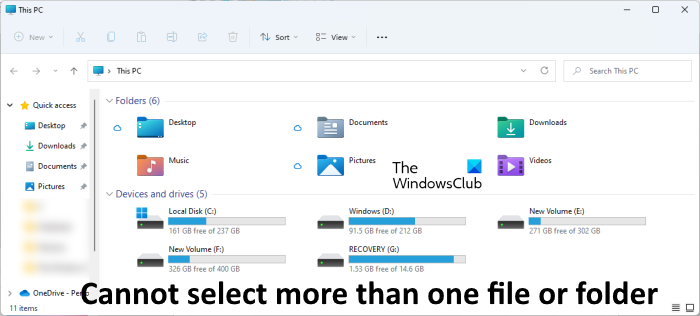
For example, you can open the folder that contains the files or folders you want to select and then select the files or folders using any one of these methods:
- To select a consecutive group of files or folders, click the first item, hold down the SHIFT key, and then click the last item.
- To select a consecutive group of files or folders without using the keyboard, drag the mouse pointer to create a selection around the outside of all the items you want to include.
- To select non-consecutive files or folders, hold down CTRL, and then click each item you want to select or use the checkboxes.
- To select all the files or folders, click Organize on the toolbar, and then click Select All.
Cannot select more than one file or folder
If, for some reason, in Windows File Explorer, you cannot select more than one file or folder, either after using the Select All option from Organize Tab or Ctrl+A keyboard combo, then you may try this:
- Disable checkboxes in File Explorer
- Reset Folders
- Tweak Registry
- Run File and Folder Troubleshooter
- Disable single click to open an item
Let’s see all these fixes in detail.
1] Disable checkboxes in File Explorer
If checkboxes are enabled in File Explorer, this may be one of the reasons why you cannot select multiple files and folders in Windows 11/10. Disable this option and see if it helps. The following steps will guide you on this;
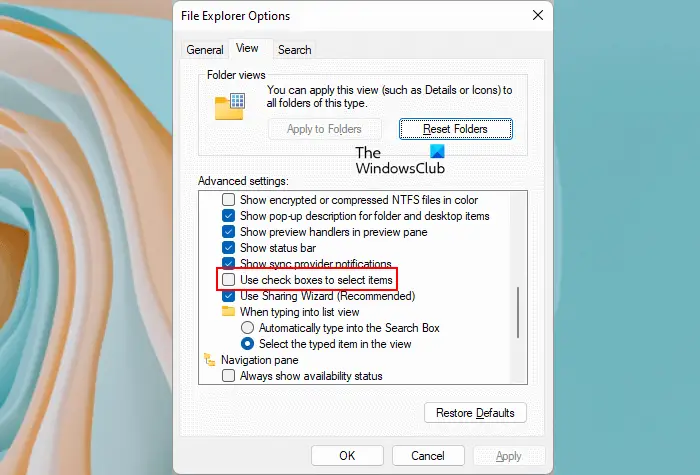
- Open Folder Options.
- Switch to the View tab.
- Scroll down and deselect the Use check boxes to select items option.
- Click Apply and then click OK.
Now, check if the issue persists.
2] Reset Folders
If the above fix did not work, resetting the folders may work. Open Folder Options, click on the Reset Folders button, restart your computer and see if it has helped.
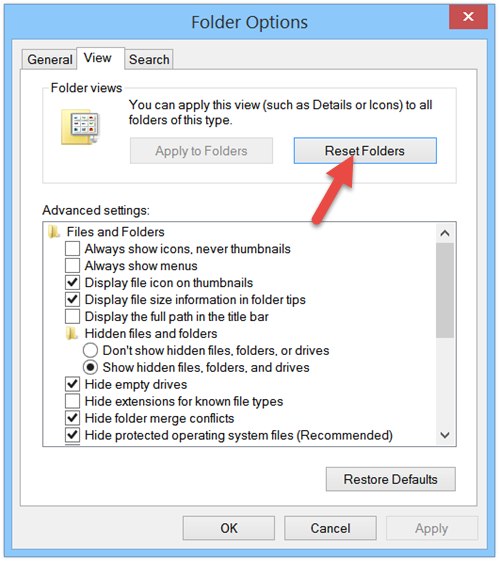
3] Tweak Registry
If it does not help, create a system restore point first and then open Regedit. To do so, press Win+R in combination and in the ‘Run’ dialog box that appears on your computer screen, type ‘regedit’ and hit ‘OK’.
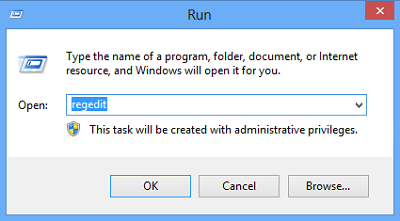
Next, navigate to the following key:
HKCU\Software\Classes\Local Settings\Software\Microsoft\Windows\Shell
Now delete the Bags & BagMRU keys.
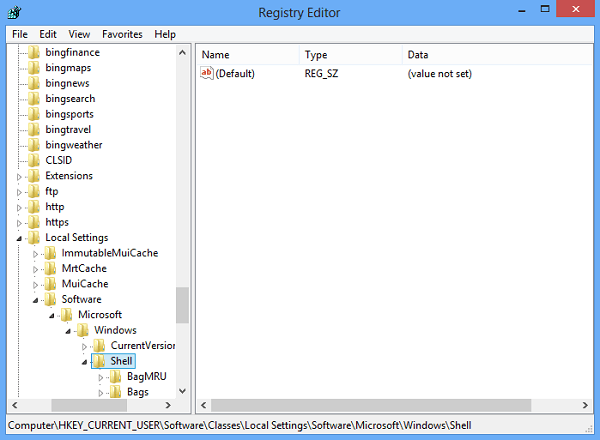
Restart your explorer.exe or computer and see if it has helped.
4] Run File and Folder Troubleshooter
You can also try the Windows File and Folder Troubleshooter. Apart from fixing other explorer problems, it fixes the following too:
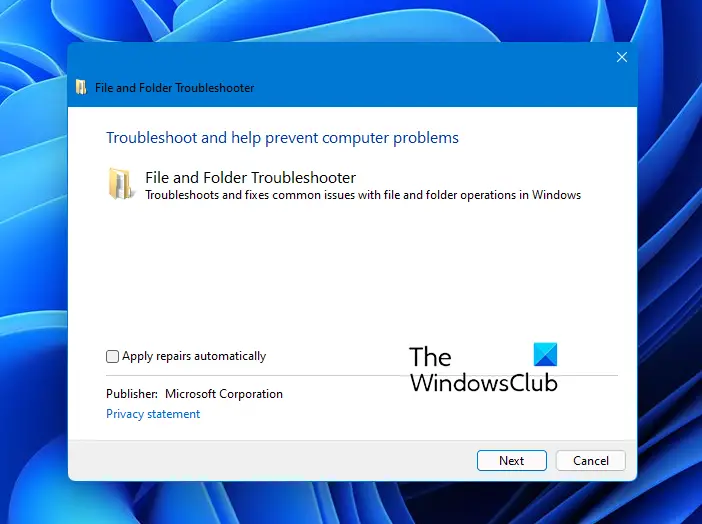
You cannot use keyboard shortcuts to select more than one item in Windows Explorer, or you cannot select multiple items in a Windows Explorer window by holding the SHIFT key or the CTRL key while you click the items.
5] Disable single click to open an item
In File Explorer settings, you can set a single click of your mouse to open files and folders instead of a double-click. If you have enabled this setting, disable it and see if it helps. This solution has worked for many users. Therefore, it should also work for you.
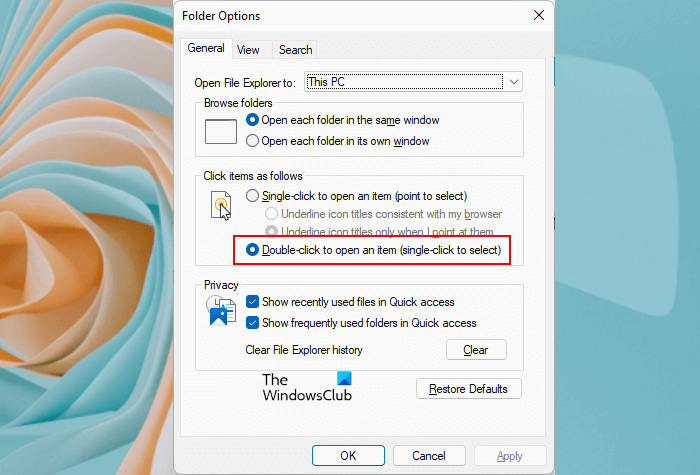
Go through the following instructions:
- Open Folder Options.
- Under the General tab, select the Double-click to open an item (single-click to select) option.
- Click Apply and then click OK.
Should work on Windows 11/10/8/7.
How do I select multiple folders in Windows 11?
To select multiple files and folders in Windows 11, press and hold the Ctrl key on your keyboard and then select the files and folders one by one. When you drag your mouse on your Desktop and File Explorer by pressing the left mouse click, Windows creates a transparent box on the screen. You can also use this method to select multiple files and folders in Windows 11.
How do I open multiple files on Windows 11?
You can open multiple files on Windows 11 one by one or by selecting all of them and hitting Enter. But the latter method will cause a sudden rise in CPU usage which is not good for your system. Hence, if you want to open multiple files on Windows 11, open them one by one.
I hope this helps.
Read next: How to open Folder with Keyboard Shortcut in Windows 11/10.
THANK U
Another way to Select consecutive or non-consecutive filers in Explorer : Open Windows Explorer >Click on ‘View’ tab > Check ‘Item Check boxes’ , this will show Check boxes against files to make the selection easier w/o using keyboard, just use mouse to select consecutive or non-consecutive check boxes.
Mentioned in Point – 3 above. ;)
OhK…missed that link
Another site that also described how to delete the BagMRU and Bags registry keys to restore multiselect happened to mention that the multiselect feature is disabled after you organize files in a custom order. So I tried using the built-in column sorting feature, to clear any custom sorting I might have done. In Explorer, using Details View, I clicked the Filename header to sort the files by file names. That fixed it! I was able to multiselect. No registry editing was needed.
Anytime I click on just one item, all other files open. How can I disable
thank you sir! this worked for me
When I use my Shift key and arrows to highlight contiguous photos, it will only highlight one at a time. This has never happened to me before. It’s a new Windows 10 PC, but I’ve used the typical method successfully on this computer until now.